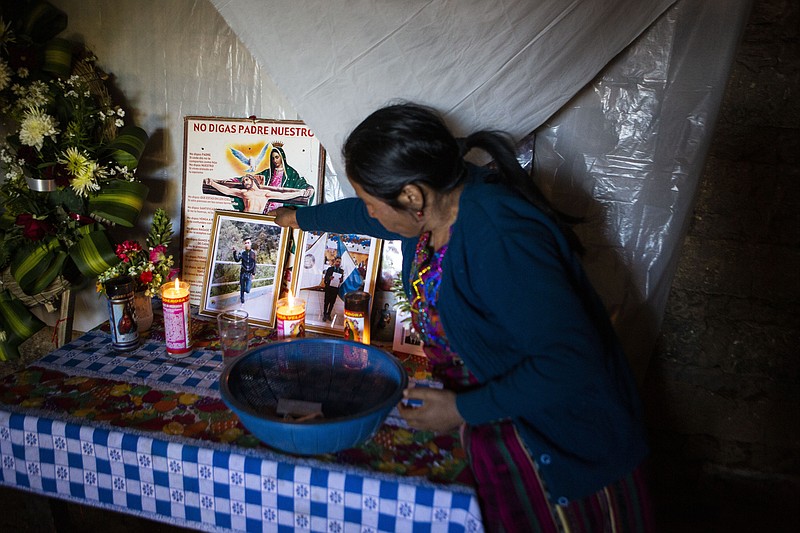CIUDAD VICTORIA, Mexico -- A dozen state police officers were questioned Wednesday after their arrests in connection with the killings of 19 people, including Guatemalan migrants, whose bodies were found shot and burned near the U.S. border late in January.
Tamaulipas state Attorney General Irving Barrios Mojica announced Tuesday night that all 12 officers were in custody and face charges of homicide, abuse of authority and making false statements.
The killings revived memories of the 2010 massacre of 72 migrants near the town of San Fernando in the same gang-ridden state. A drug cartel was said to commit those killings, while law enforcement was said to carry out the Jan. 22 slayings.
"In the aforementioned acts of Jan. 22, at least 12 state police officers participated," Barrios Mojica said.
The attorney general did not say what motive the officers might have had, though drug cartels often pay corrupt local and state police in Mexico.
Cartels in Mexico often charge migrant smugglers for crossing their territory and kidnap or kill migrants whose smugglers have paid a rival gang.
The bodies were found piled in a charred pickup in Camargo, across the Rio Grande from Texas, in an area that has been bloodied for years by turf battles between the remnants of the Gulf cartel and the old Zetas cartel.
Another burned vehicle was found at the scene and authorities say immigration officials seized it in a raid that detained 66 migrants on their way to the U.S. In December.
Interior Secretary Olga Sanchez Cordero said Wednesday that immigration agents tied to the case were fired, though she provided no details on their number or their alleged role.
"These violations of the rights of migrants are absolutely unacceptable," Sanchez Cordero said. She said no member of the security forces or immigration authority was above the law.
Authorities said four of the dead have been identified -- two Guatemalans and two Mexicans. Officials have not released their names, but relatives of one of the dead Mexicans said he worked as an immigrant trafficker.
Of the 19 bodies experts examined, 16 were males, one was female and the two others were so badly burned their sexes were not determined.
The forensic results confirmed the fears of families in a rural Indigenous farming community in Guatemala who said they lost contact with 13 migrants as they traveled toward the United States.
Guatemala's foreign affairs ministry said late Tuesday that it was working closely with Mexican authorities. In a statement, it asked that "the full weight of law be applied to those responsible for such unfortunate events that have Guatemalan families mourning."
The truck holding the bodies had 113 bullet impacts, but authorities found few shell casings at the scene.
"There is growing force behind the hypothesis that the crime scene was altered, due to the absence of casings," Barrios Mojica said.
In describing the hours that led up to the killings, Barrios Mojica said the truck carrying the victims was apparently part of a larger convoy of vehicles transporting migrants from Guatemala and El Salvador to smuggle them across the U.S. border. He said the trucks also carried armed men to provide protection.
Barrios Mojica did not rule out that the reason for the killings may have been a dispute between drug gangs, which fight over territory and the right to charge migrant smugglers for passing through it.
Information for this article was contributed by Maraa Verza and Sonia Perez D. of The Associated Press.




